Science Daily News | 17 Jul 2023

Views (86)
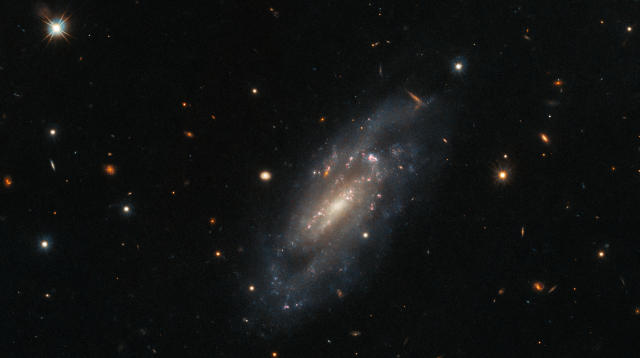
In pictures: Hidden history of Coventry revealed in saved photographs
Hundreds more images are digitized and show remnants of Coventry's medieval past.
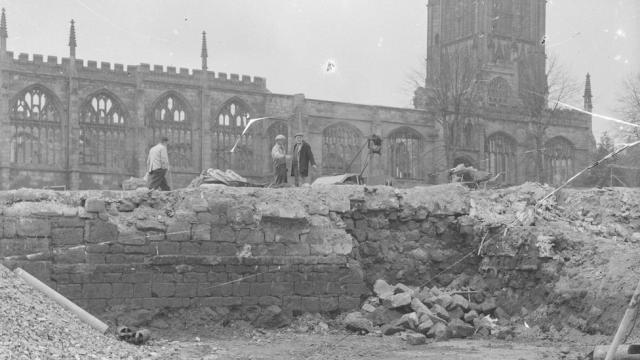
Rare glimpses of a city's medieval past and long-gone street scenes have been revealed in a collection of photographs that were saved from destruction.
About 800 more negatives, handed to a city archive by a cameraman who saved them from being dumped, also show early excavations for the building of Coventry's modern cathedral.
As well as the city streets, weddings, parades and visiting celebrities are among the collection from the photographer who captured everyday life in the city.
The new collection contained "significant" images that would "greatly enhance" Coventry Cathedral's archive, said Martin Williams.
The chairman of the Friends of Coventry Cathedral has helped digitize the latest collection as well as identify people and events depicted.
"It's been quite exciting working through them but some of them were really badly damaged, which is a shame because they are moments in history that have gone," he said.
Some of the latest collection shows parts of the city's cathedral and priory site, St Mary's, dating back to the time of Leofric, the Earl of Mercia and Lady Godiva.
The walls were uncovered during construction of the new cathedral in the mid-1950s.
The photographs "show the scale of the priory complex," destroyed following the dissolution of the monasteries, said Mr Williams.
City archaeologist at the time, John Shelton, can be seen pictured at the site, he explained.
"He tried to preserve the history of the city before we did archaeology in a big official way, before it became as important as we regard it today," he added.
There was little organisation in the city at the time "that could bring pressure to bear to make sure our archaeological sites were properly examined," added Dr Ben Kyneswood, director of the Coventry University initiative.
"What I like about these photographs is they give you a real sense that there is archaeology there, going back a thousand years, nearly, and I'd never seen that before."
"If it were today there would have been some significant research involved," he added.
Other pictures show hundreds of concrete piles being driven to form the cathedral's foundations, and pre-war streets already being cleared under plans to modernise the city, before German bombing accelerated the process.
A mid-1930s view of the city centre shows how planners had "completely changed the road system," added Dr Kyneswood.
"This whole area was a very narrow medieval street pattern that was all cleared to make way for this brand new Trinity Street which allowed the traffic - increasingly larger vehicles and buses - to travel through through the city centre."
"Unfortunately, Coventry had a council at the time that was only looking in one direction," he added, leading to the "tragic" destruction of many mediaeval buildings.
Another picture shows a visit to the city by actor Edward G Robinson, who had been identified by members of the Friends of Coventry Cathedral, said Mr Williams.
"My guess is that he visited Coventry in the summer of 1962 and contrary to the gangster image that he portrayed in many of his roles, he was in person a gentle man with a serious interest in art."
An image of Pearl Hyde, the first female Lord Mayor of the city, pictured with a Russian icon, was another favourite, he said.
"[The icon] arrived in a parcel with no information so she took it over to the cathedral because she thought it was perhaps a place that should have it," he explained.
"And then about six weeks later a letter arrived saying it was a gift from Kazan Cathedral in Stalingrad."
Dr Kyneswood said he would again be working with volunteers around the city to crowdsource information about the photographs.
"The pictures are brilliant, but the main thing is people like Martin and the Historic Coventry Forum and other groups have logged in and said 'this is what you're looking at,' and they've told the story, and it's their version of history.
"And suddenly we get a biography of the photo, which is way more than you would ordinarily get if you go on any website," he said.
The work with Mirrorpix and owner Reach PLC on the Arthur Cooper collection was "really important, because it is telling that kind of street-level working class stories," he added.
Extreme heat intensifies across south-west US
More than a dozen states are under warnings with the brutal conditions showing no sign of abating.
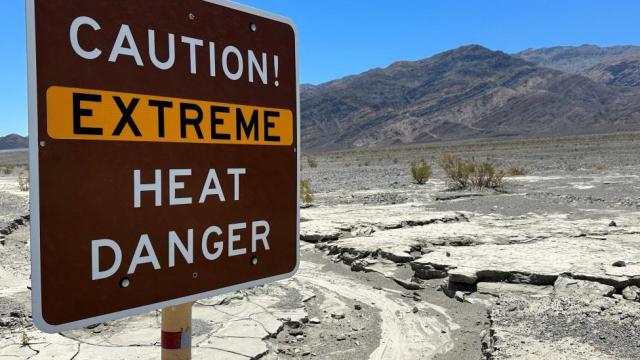
A heat dome over the US south-west has translated into extreme heat warnings from coast to coast, which continue to affect more than 110 million people.
Temperature records could be broken in as many as 38 cities.
In Las Vegas, the intense heatwave is threatening on Sunday to break or tie the city's record high of 117F (47.2C).
Hundreds of firefighters have also been battling brush fires in blistering heat and low humidity on the outskirts of Los Angeles.
Temperatures in Death Valley in California hit 128F (53.9C) on Sunday, according to the National Weather Service (NWS). It is the site of the hottest temperature ever reliably recorded on Earth: 134F (56.7C).
The usually crowded streets of Las Vegas are considerably emptier than normal, and security guards are guarding the fountains of upscale casinos and hotels to prevent people from jumping in.
Reporting from the city, BBC producer Samantha Granville said Sunday's heat felt like "when you are baking a cake and open the oven to see how it's rising, and you feel all the heat rush to your face - except it's your entire body and you can't pull back from it.
"The heat is suffocating. It literally takes your breath away when you step outside."
El Paso, in Texas, has seen temperatures of 100.4F (38C) and above for more than a month now, with no respite in sight.
The city of Phoenix, which has been experiencing temperatures above 109.4F (43C) for 17 days in a row, was granted some modest reprieve on Sunday by a thick cloud cover, which was expected to keep the temperature around 115F (46.1C).
But the heat is set to continue for the foreseeable future, and authorities are warning that vulnerable people - including children, pregnant women and the elderly - are at serious risk of heat-related illness.
Mobile clinics report treating homeless people suffering from third-degree burns. Public buildings in some parts of California and Nevada have been turned into "cooling centres" where people can take refuge from the heat.
The Weather Channel says that the dome of high pressure will expand across the nation's south by the middle of next week - meaning other southern US will see temperatures rise.
The temperatures in America's south-west are the result of an upper level ridge of high pressure, which typically brings with it warmer temperatures, the US National Weather Service said, adding that the heatwave was "one of the strongest" systems of its kind to hit the region.
Meanwhile, other parts of the US are bracing themselves for severe thunderstorms and flash floods - and north-eastern states could experience another bout of poor air quality as a result of the continuing wildfires in Canada.
"As if the rain coming out of the sky isn't enough, if you start looking up tomorrow, you're going to see a similar situation in what we had a couple of weeks ago because of the air quality degradation [from the wildfires]," New York governor Kathy Hochul said at a press conference. "And as I said before, this is possibly our new normal."
Isle of Man sends digital stamps on data storing mission to the Moon
A set of stamps is being sent to the Moon on a mission to explore how data centres work in space.

Digital Manx stamps are to be sent to the Moon on a mission to discover how data centres work in space.
Digital Isle of Man and space data storage company Lonestar are taking part in NASA's Commercial Lunar Payload Services programme.
It aims to explore how data could be stored on the Moon and retrieved should a catastrophe take place on earth.
Enterprise Minister Tim Johnston said the island was building on its "history of innovation in the space sector".
The possibilities this technology could bring were "hugely exciting", and the project was an example of the island participating in "pioneering new developments for businesses", he said.
A government spokeswoman said the initiative was using expertise in the island's blockchain industry to "digitise exclusive stamps that will be posted to the Moon and back" via Lonestar's lunar data centre.
Lonestar CEO Chris Stott said he felt "enormously privileged to be able to run such a novel mission from my home".
He said: "We could not do this without the island and its unique commitment to disaster recovery, space, and the global digital economy."
The government spokeswoman said the digital stamps, which each feature a different version of the triskelion flag, would be verified and tracked on the return trip to the Moon, and the trail would become part of a digital footprint.
They would then be transmitted back to the Earth as part of the larger Artemis lunar exploration programme mission, she said.
Super-close supernova captivates record number of citizen scientists
Data from the closest cosmic supernova explosion to Earth for 10 years was collected by a record number of observers for SETI, showing what the collective power of citizen scientists can achieve.
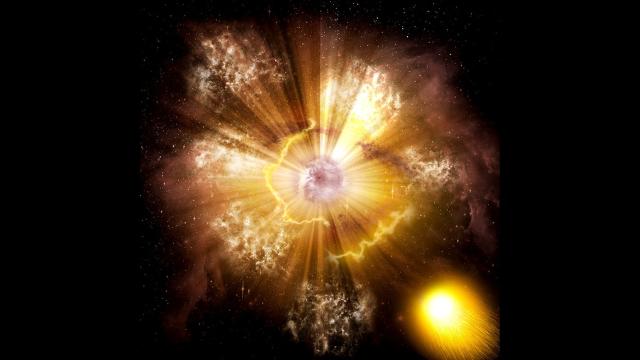
The closest cosmic explosion to Earth in the last 10 years became a record breaker for the Search for Extraterrestrial Intelligence (SET) Institute.
The effort involved 123 dedicated amateur astronomers making 252 observations with 115 telescopes following how light from the supernova changed over time, first seeing its escalating brightness and then tracking its gradual fading. This allowed the SETI scientists to build a profile for the supernova that astronomers called a light curve, a measurement of its brightness over time.
RELATED STORIES:
Participants receive real-time alerts when transient events are spotted, resulting in the rapid initiation of observing campaigns such as the one seen for (SN) 2023ixf. As they monitor the increase in brightness and subsequent fading of cataclysmic events, volunteers help scientists to gather vital details about the objects behind these violent and powerful celestial occurrences and their impact on surrounding gas and dust, known as interstellar material.
The program will get a major boost next year when the Vera C. Rubin Observatory in Chile commences operations, allowing the Unistellar network of citizen astronomers to team up with other crews of astronomers and professional astronomers to study transient events.
Entire pod of 55 whales dies after mass stranding on Lewis
Just 15 were alive after the stranding and vets had to euthanise the survivors on welfare grounds.
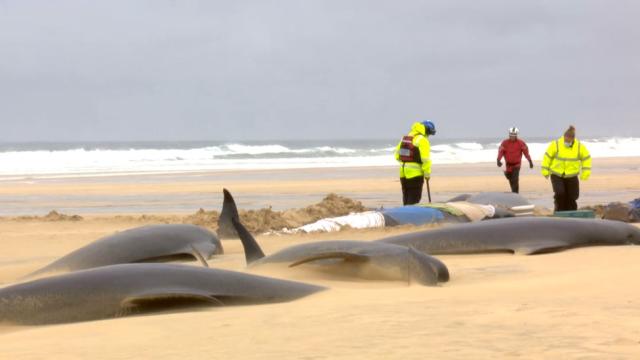
An entire pod of 55 pilot whales has died after a mass stranding on a Western Isles beach.
Only 15 were alive after they washed onto Traigh Mhor beach at North Tolsta on the Isle of Lewis at about 07:00 on Sunday morning.
Marine charity British Divers Marine Life Rescue (BDMLR) attempted to refloat one of the more active whales but it was then restranded.
The decision was taken to euthanise the remaining whales on welfare grounds.
Western Isles Council - Comhairle nan Eilean Siar - has asked people to avoid the area as a clean-up operation began.
This led them to suspect that the whole pod stranded due to one female giving birth.
Pilot whales are known for their strong social bonds, so often when one whale gets into difficulty and strands, the rest follow.
Attempts continued throughout the day to give the surviving whales first aid.
But after the attempt to refloat one of the whales, it was found further down the beach.
A further three whales then died, leaving 12 still alive - eight adults and four calves.
A statement said: "At about 15:30, the local vet along with the Coastguard, Fire and Rescue, and a forensics vet came to the conclusion that the shallow beach and rough wave conditions made it too unsafe to refloat the remaining animals.
"Considering how long the pilot whales had been out of the water in addition to the poor conditions, it was decided that they should be euthanised on welfare grounds."
Members of the Lewis community, Stornoway Coastguard, Stornoway and Shawbost Fire and Rescue, the Scottish Marine Animal Stranding Scheme (SMASS), the Scottish SPCA, and Civil Air Support were all involved in the rescue effort, with vets and marine experts being flown in to help.
SMASS will now carry out post mortem examinations of the bodies to conclude the cause of the stranding.
Pilot whales are small whales characterised as part of the dolphin family.
Earlier BDMLR's Welfare and Conservation Director Dan Jarvis told BBC Scotland that the longer the whales were on the beach, the less likely it was that they would survive.
He said: "They have evolved to not have the ability to support their own weight on land. So when they are stranded they can crush themselves to death.
"Pilot whales don't usually come in to shore. They would be potentially disoriented, distressed from what has led to the stranding, and distressed from the stranding itself and being surrounded by family members who have died around them.
"This is one of the biggest incidents we've had in the last couple of decades."
A Comhairle spokesperson said: "Comhairle nan Eilean Siar asks that the public follow police advice and avoid Traigh Mhòr.
"The Comhairle has engaged with professionals and is now working with partner organisations to clear the beach."
Hubble telescope captures stunning shot of spiral galaxy (photo)
A dazzling new photo from the Hubble Space Telescope shows a distant galaxy that hosted a supernova explosion not long ago.
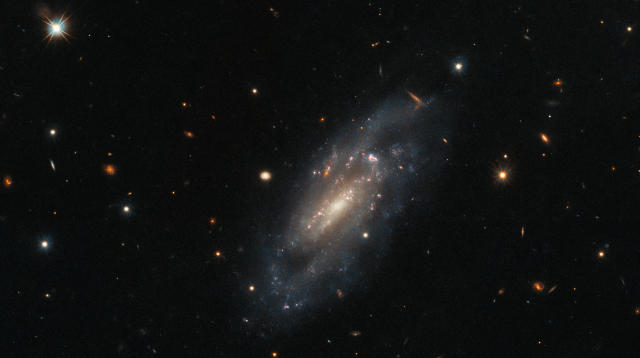
A dazzling new photo from the Hubble Space Telescope shows a distant galaxy that hosted a supernova explosion not long ago.
"The hugely energetic processes during supernova explosions are predominantly responsible for forging the elements between silicon and nickel on the periodic table," NASA officials said in the statement. "This means that understanding the influence of the masses and compositions of the progenitor star systems is vital to explaining how many of the chemical elements here on Earth originated."
RELATED STORIES:
Observations of supernova remnants like the one in UGC 11860 can help astronomers learn more about the star systems that fuel such cosmic explosions.
0 Likes
